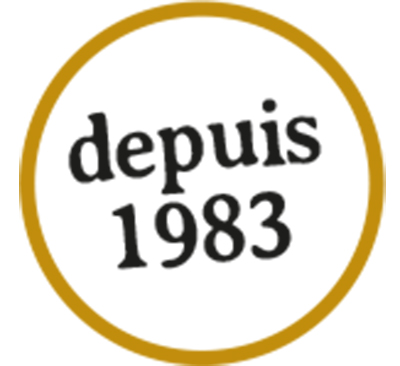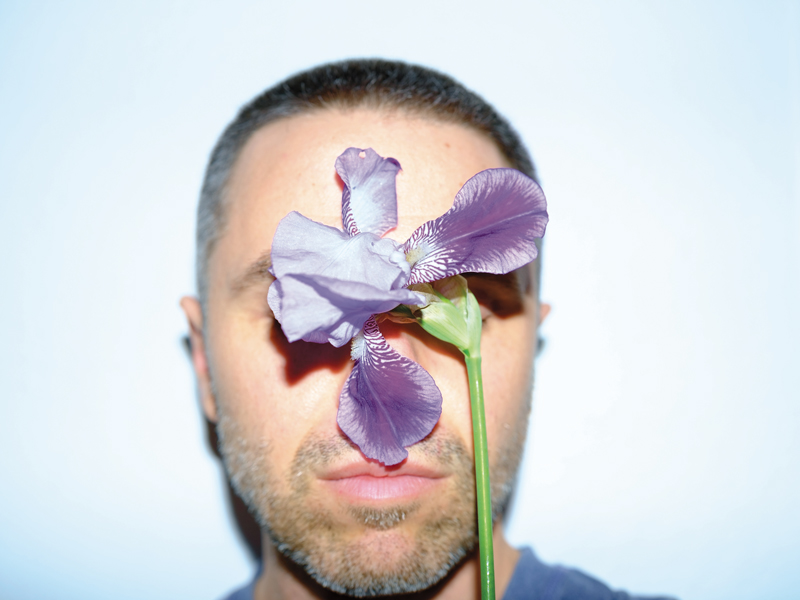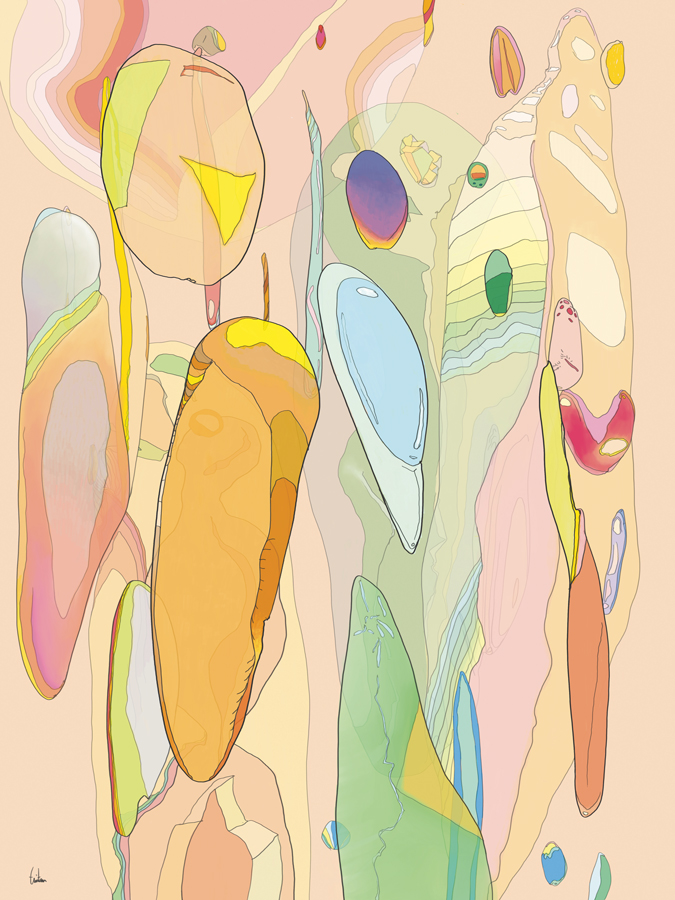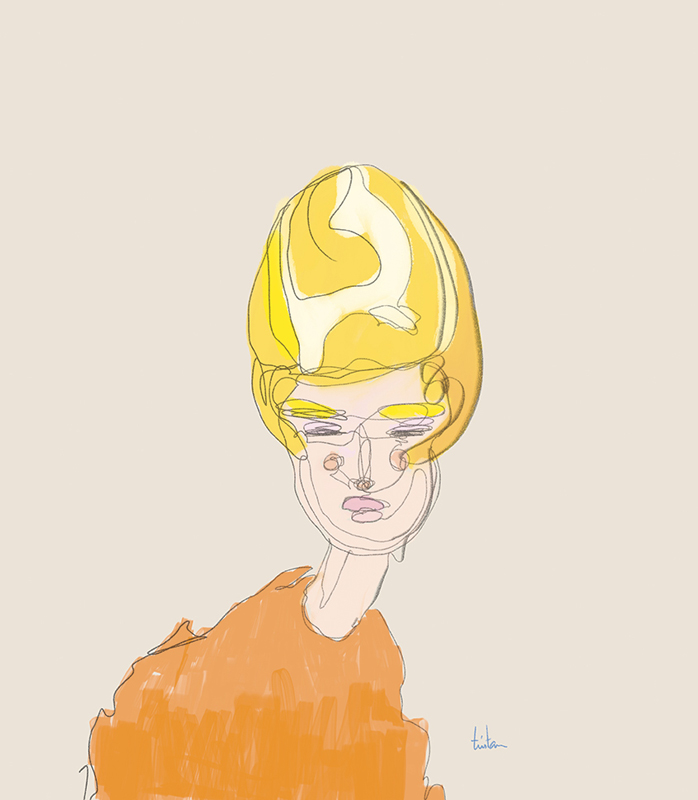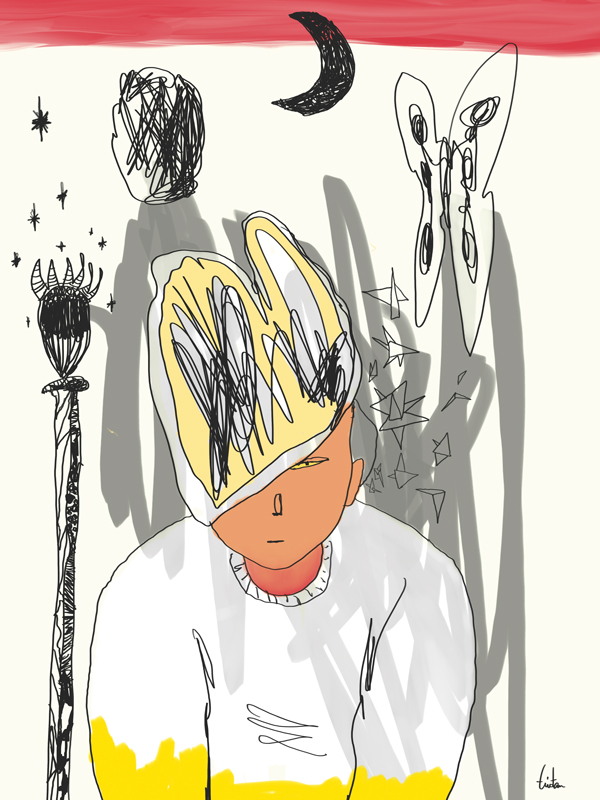Tristan Corbeil Lapointe
Un texte de Sharon Kivenko
Paru dans le numéro Printemps/Spring 2025
Publié le : 20 février 2025
Dernière mise à jour : 20 février 2025
Tristan Corbeil-Lapointe's art is about navigating ever-changing states-of-being in his interior landscape and in the landscapes around him.
As Tristan Corbeil Lapointe would craft cappuccinos, we would skip the small talk and get right into what it is to nourish creativity. Or how artists respond to the impulse and the imperative to make work. For him, it is about reconciling the tension between urgency and deliberation, between the present and the past, between raw expression and intellectual justification. But as Tristan recently explained to me, fostering creativity and making art are not simply about balancing two equal and opposite pulls, they are about navigating ever-changing states-of-being that he observes both in his own interior landscape and in the natural, social and built landscapes that surround him.
A Multi-Faceted Artist
Just before the winter holidays we met for coffee. Nestled into a corner table, we discussed Tristan’s winding life path, and the ways in which his photography and illustrations are creations of emergent personas, of aspects of himself most pronounced in any given moment.
I was struck by the multiple facets of his life and work. The rigid daily schedule he keeps to manage the bricolage that makes up his days (barista, artist, father, “lonesome walker”) stands in marked contrast to the multiplicity that he feels and sees in his artwork. The adjectives he used to describe himself were wide ranging: he is “curious” and “raw,” he is an observant “co-creator,” and “an empath.” At times, he can be quite “compulsive” and “precocious.” As “a mirror” to what he observes, he “disappears into the background” so that his photo can reflect back what he witnesses. Getting to know him, I have come to see some of what he described.
Photography
His compulsive and precocious side was evident on Halloween night. Joining the Café Yamabiko crew in clown costumes, Tristan painted his face in rainbow colours that blended one into the next. He moved through the space with intensity. Eyes wide, smile large, he inhabited the manic yet playful persona of a clown. He snapped impromptu photos of Suttonites in our own creative imaginings. Corbeil Lapointe’s stunning candid compositions from that night are full of colour and movement. They capture the eclectic display of villagers’ joie de vivre.
I witnessed the contemplative and empathic sides of Tristan in the large-scale photos he displayed at a holiday weekend pop-up. Among the soft colour palettes of his photos of flowers, country landscapes, buildings, and decaying vehicles, one image in particular caught my eye: a lone tree in a snowy field. Branches bare and moist glistening in pink-blue afternoon light—twinned hues of nostalgia and anticipation. In the foreground, springtime snow melts into droplets on the camera’s lens. Small prisms of light lending texture to the surface of the image. The photograph is now in my home. I look at it several times a day, imagining the cool moisture in the air, a winter-waning breeze and the promise of renewal.
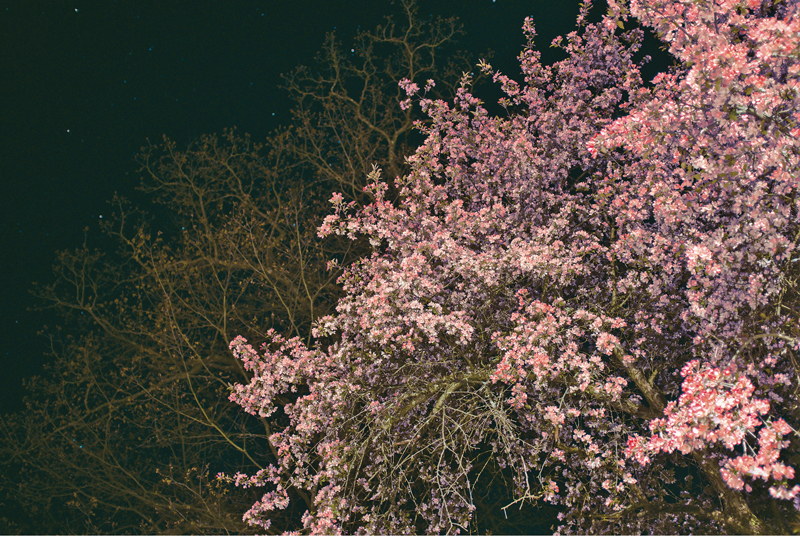
Illustrations
During our coffee conversation, Tristan explained that his many “personas” are what drive him to the multiple media that comprise his body of work. While his photography relies mostly upon the intellectual observer or contemplative parts of himself, his illustrations depend on him allowing the meditative parts of himself to take the lead. What emerges are face-obscured figures atop bodies of exaggerated proportions. Bulbous objects floating through colour-saturated spaces. Like Tristan himself, these illustrations communicate “multiplicity”. How multiple competing realities can coexist: they are playful and acerbic, pained and celebratory, ruminating and simple.
For Tristan, multiplicity is an ongoing state of transformation. For this reason, his visual art explores “the vulnerability and ephemerality of common things that we cherish, like flowers blooming [or] cars” rusting in the snow. While drawing, Tristan is constantly changing direction, moving in and “respecting” a state of “flow.” This “facilitates his well-being while creating,” freeing him from “the burden of fixed identification or meaning and goals.” To work in this way, to lean into, to harness, and to reconcile the multiple competing realities and personas that swirl around and within him supports his creative process, one that keeps Tristan in tune with how he feels and lives in any given moment, “narrowing the gap between being and doing.”
You can follow Tristan Corbeil-Lapointe on his FB page and on Instagram.
Sharon Kivenko
